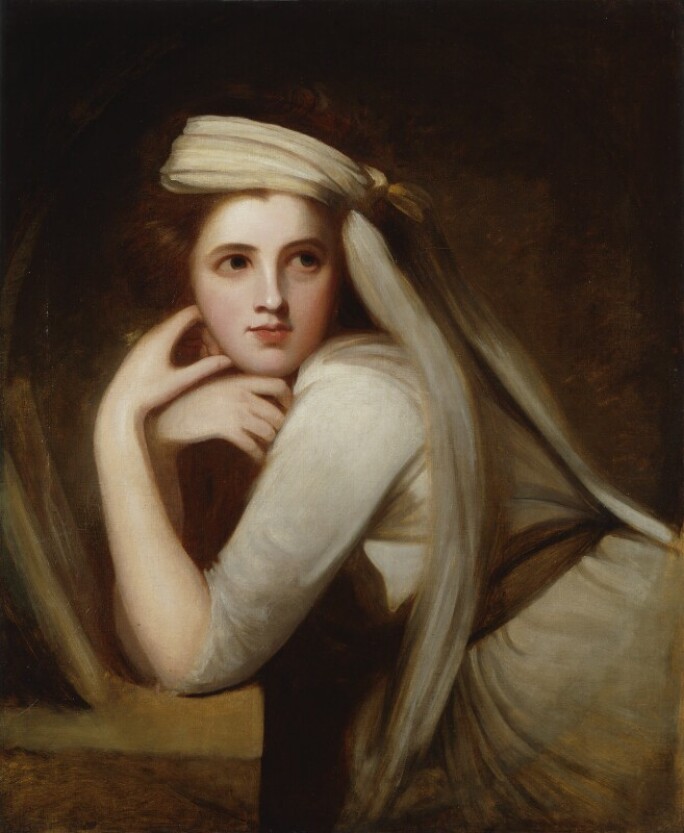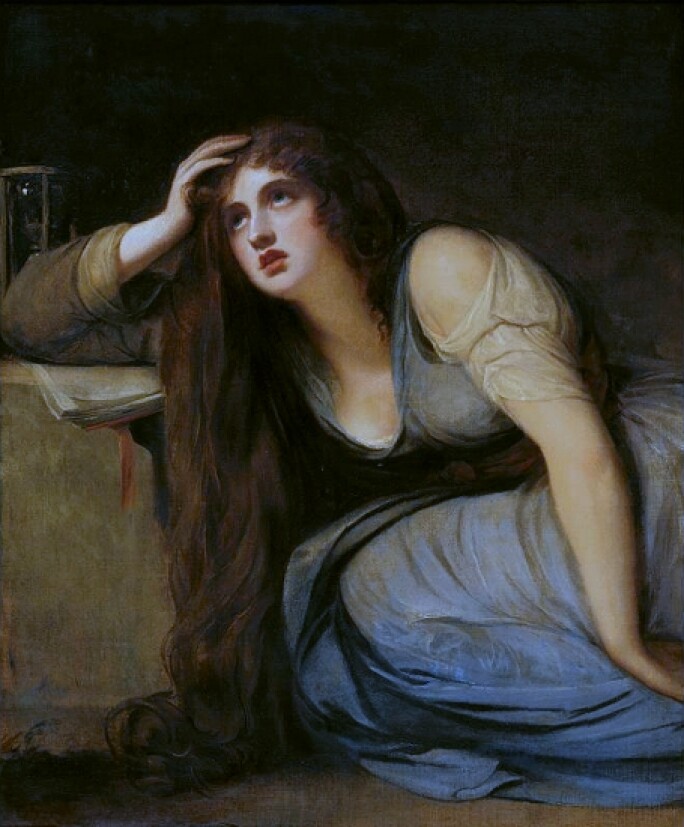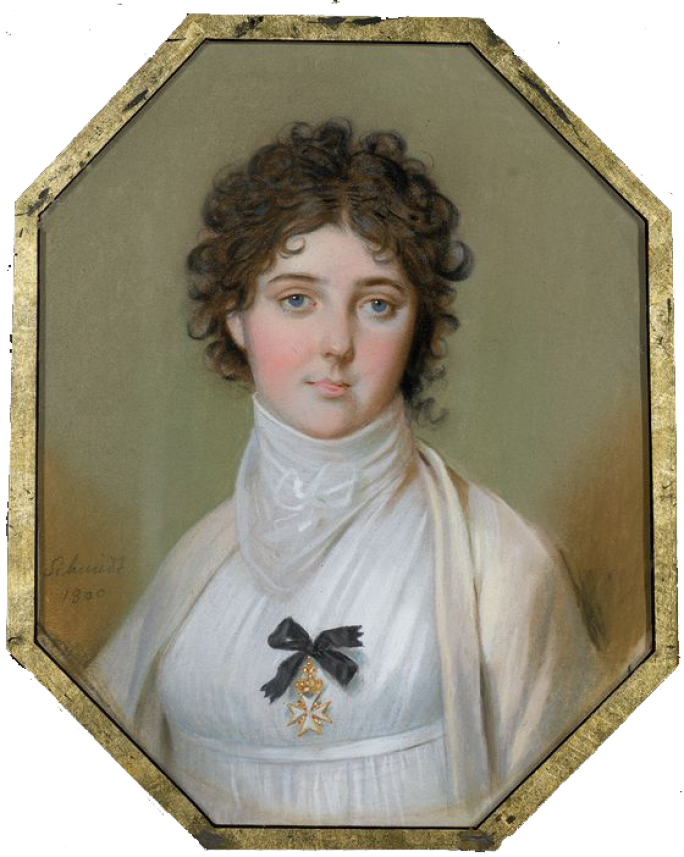S otheby's is proud to present in its Fine Jewels Sale a unique necklace owned by Emma, Lady Hamilton, best remembered as the mistress of Lord Admiral Nelson and the muse to the portrait artists George Romney.
The daughter of a blacksmith, Emma was raised by her mother and grandmother. Taking the name Emma Hart and without any formal education, she moved to London in 1777 where she worked as a maid for various actresses at the Drury Lane Theatre Covent Garden. Pretty and ambitious Emma became a model and dancer for the Scottish quack doctor James Graham at his Temple of Health.

At 15 Emma was employed by Sir Harry Fetherstonhaugh, initially as a hostess, and later as his mistress. At his estate Uppark, she entertained guests by dancing naked on the dining room table. Emma later befriended the Honorable Charles Francis Greville, who took Emma as his mistress on the proviso that she fostered her illegitimate child by Fetherstonhaugh.
Greville provided for Emma by renting a house in Edgeware Row, Paddington Green for her and her mother. It is during this time that she began to sit for Greville’s friend, the portrait artists George Romney. After Emma became the new subject for several of Romney’s famous portraits, she became a celebrity in London society.
In 1783 Greville persuaded his uncle Sir William Hamilton, British envoy to Naples, to take Emma off his hands, thus freeing him to marry the wealthy heiress Henrietta Middleton. In 1786 Emma travelled to Naples, unbeknownst to her to be the mistress of her lover’s uncle. Greville had proposed the trip as an extended holiday as his uncle’s hostess while he was away on business in Scotland. After nearly six months living in various apartments Emma realised Greville’s plan to be rid of her, but she had begun to enjoy her life in Naples and the friendship of Sir William.

Returning to England in 1791 they were married at St Marylebone Parish Church on 6 September. Emma was 26 and Sir William 60. It was during this time that Romney painted his last portrait of Emma as the Ambassadress. On their return to Naples Emma became a close friend and confidant to Queen Maria Carolina, captivating Neapolitan society.
It was during this time that she developed her Attitudes, in which she portrayed figures from antiquity from classical sculptures and paintings before British visitors. Using Romney's idea of combining classical poses with modern allure as the basis for her act, she would pose wearing lose fitting garments modelled on those worn by Neapolitan peasants, accompanied by various shawls and veils. Emma soon became a sensation as she posed as various historical figures from antiquity, from Medea to Cleopatra, setting a new trend for Grecian inspired dress.

Emma first met Nelson on 10 September 1793 when he arrived in Naples to gather reinforcements against the French. On his return to Naples five years later, Emma and Sir William invited him to stay at their home in the Palazzo Sessa. In 1800, while nursing Nelson back to health, Emma hosted a lavish party to celebrate his 40 th birthday.
Emma became Nelson's secretary, translator and political facilitator and they soon fell in love, an affair that was tolerated, and perhaps even encouraged, by the elderly Sir William, whose own health was now failing. In 1799 Naples was the scene of a revolutionary uprising leading the royal family to flee to Sicily.

Soon after, Nelson was recalled to London, while Sir William was finally granted his request for retirement and followed suit with Emma. The Hamilton’s moved into Grosvenor Square while Nelson moved into nearby Dover Street. Emma gave birth to Nelson's daughter Horatia on 29 January 1801, while Nelson began proceedings to separate from his wife Fanny. Emma made a spectacular appearance at a concert at the house of the Duke of Norfolk in St James' Square, working hard to keep the press onside and mitigate the social scandal surrounding her affair with Nelson. It was soon after this time that the Prince of Wales became infatuated with Emma, leading Nelson to be consumed by jealousy, inspiring a remarkable letter by Sir William to Nelson, assuring him that she was being faithful.
By the autumn of the same year, upon Emma's advice, Nelson bought Merton Place, a small ramshackle house near Wimbledon, for £9,000, borrowing money from his friend Davison. There they lived together openly, with Sir William and Emma's mother, in a ménage à trois that fascinated the public, married in all but name. By the autumn of 1803, Sir William's health was declining, and on 6 April he died in Emma's arms, and the creditors closed in.

Emma received several marriage proposals during 1804, but she refused them all, she was still in love with Nelson and believed that he would become wealthy with prize money and leave her rich in his will. After the death of Nelson at Trafalgar, Emma was distraught, and her finances worsened. Although she received an annuity of £500 from Nelson’s estate and an initial sum of £2,000 it was not enough to maintain her beloved Merton and the lifestyle that she continued to maintain. By 1809, mounting debts forced Emma to finally sell Merton.
After spending time throughout 1811 and 1812 in the Kings Bench Debtors prison, in early 1813 she petitioned the Prince of Wales, the government and friends, for help without success, forcing her to auction off many of her remaining possessions, including many Nelson relics. In 1814 she fled the country for Calais, initially maintaining a façade of respectability residing in expensive rooms with a housekeeper and servants and continuing to entertain by borrowing at exorbitant rates.
By November she was forced to move into a cheap flat at 27 Rue Française and in an effort to dull the pain Emma drank spirits and took laudanum. She died aged 49 on 15 January 1815 of amoebic dysentery, an illness she probably contracted during her years in Naples.
The Necklace
When Emma, Lady Hamilton, returned to London, after the French occupation of Naples in 1800, she was forced to sell the diamonds she had worn at the Neapolitan court, replacing them with more modest purchases from the London jeweller John Slater in the The Strand. It is said that Emma did not have a penchant for extravagant jewels and clothes, preferring more modest attire of the genteel middle class.
It is known that she purchased gilt metal hair combs, pearl necklaces and earrings, both real and imitation as well as amethysts and aquamarines mounted in cannetille filigree settings, generally favoring the sentiment of The Regency period with padlocks, keys and lyre motifs. Emma also owned several Maltese Cross pendants that became a favorite of hers. Popularized by Emma after being presented with a Maltese cross by the Tsar in recognition for her charity work in aid of the Maltese under French occupation.

She was later presented an example embellished with diamonds from Queen Maria Carolina of Naples, sister to the recently executed Queen Marie Antoinette, as an indirect compliment to Horatio Nelson, who was to orchestrate the evacuation of the royal family prior to the French occupation and later assist in quelling the Republican uprising. In 1800 Emma had her portrait painted by Johann Heinrich Schmidt wearing the Maltese cross which was subsequently kept by Horatio Nelson in his cabin on board HMS Victory.
The current necklace is an unusual and early survival of the fashionable jewels that prevailed during the 1800s. Multi-coloured stones and the sentimental use of the pansy motif in a setting that is an early precursor of the later filigree cannetille.

Worn by Emma, Lady Hamilton, the necklace was subsequently later sold to the Countess of Aldborough, who gave it to Lady Campbell Barcaldine who bequeathed it to Miss Erica Rose Campbell of Barcaldine.
View Lot
The Napoleonic Wars had severely disrupted global trade and during this period it was common practice to re-set earlier jewels into more fashionable styles. The current necklace is an example of such remodeling, the principle stones are all set in foiled cut-down gold collets and are likely to have been re-used from several earlier 18th century rivieres, mounted in to more fashionable filigree settings, with the ever popular Pansy motifs using smaller gem stones as was the practice during this period.
The necklace style and form are typical of the jewels that Emma, Lady Hamilton is known to have owned and worn on her return to London in 1800, the Pansy representing her love for Nelson and her platonic love for Sir William. The necklace also retains a pendant fitting which originally may have supported a Maltese Cross, a favorite of Emma’s. It is likely that Emma wore the current necklace at a concert given at the London home of the Duke of Norfolk in the company of the Prince of Wales in January 1801, where she is known to have made a spectacular appearance to win over the London press and diffuse any scandal surrounding her affair with Nelson.
The necklace was subsequently later sold to the Countess of Aldborough, who gave it to Lady Campbell Barcaldine who bequeathed it to Miss Erica Rose Campbell of Barcaldine.

